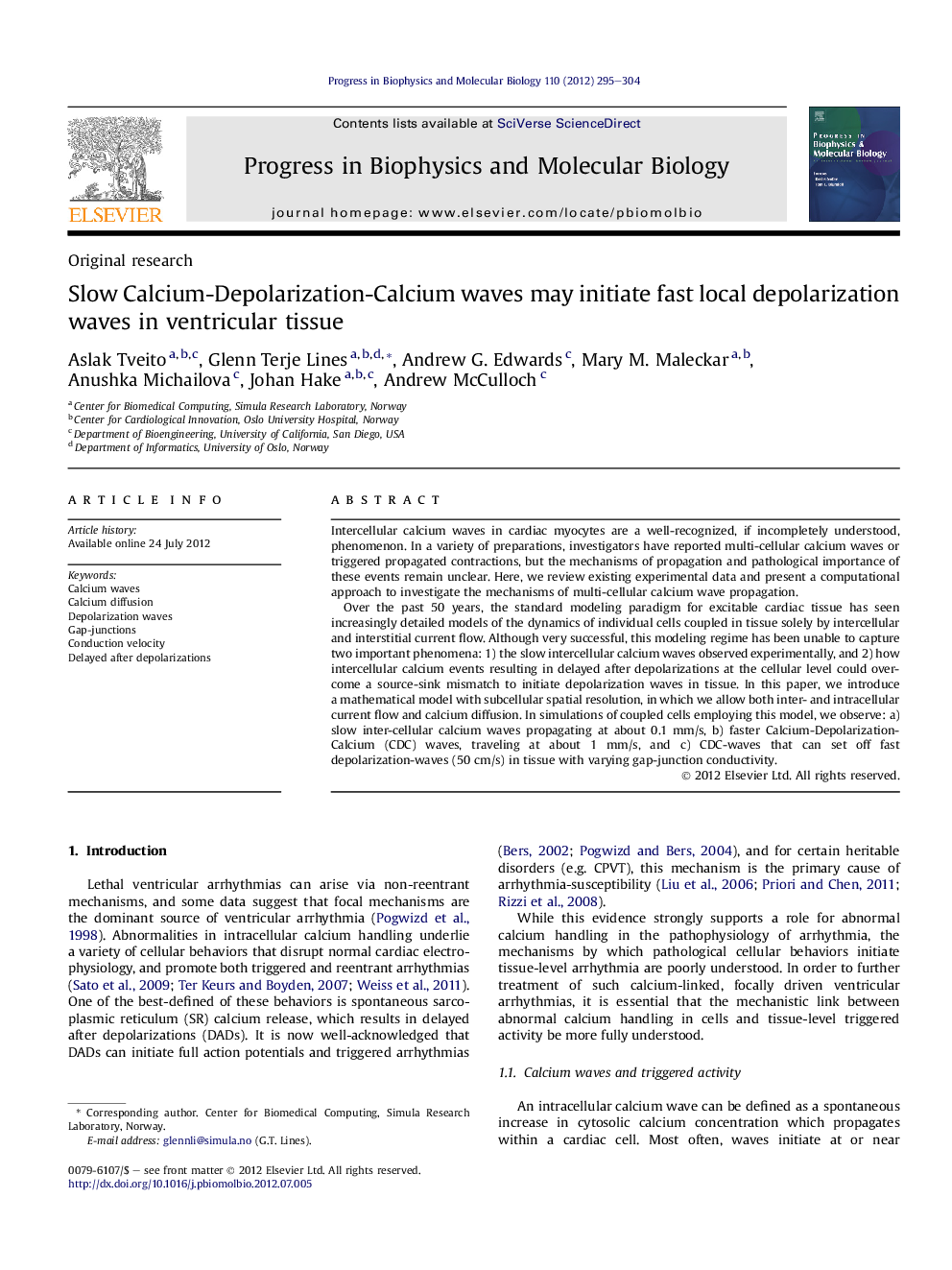| Article ID | Journal | Published Year | Pages | File Type |
|---|---|---|---|---|
| 8401420 | Progress in Biophysics and Molecular Biology | 2012 | 10 Pages |
Abstract
Over the past 50 years, the standard modeling paradigm for excitable cardiac tissue has seen increasingly detailed models of the dynamics of individual cells coupled in tissue solely by intercellular and interstitial current flow. Although very successful, this modeling regime has been unable to capture two important phenomena: 1) the slow intercellular calcium waves observed experimentally, and 2) how intercellular calcium events resulting in delayed after depolarizations at the cellular level could overcome a source-sink mismatch to initiate depolarization waves in tissue. In this paper, we introduce a mathematical model with subcellular spatial resolution, in which we allow both inter- and intracellular current flow and calcium diffusion. In simulations of coupled cells employing this model, we observe: a) slow inter-cellular calcium waves propagating at about 0.1Â mm/s, b) faster Calcium-Depolarization-Calcium (CDC) waves, traveling at about 1Â mm/s, and c) CDC-waves that can set off fast depolarization-waves (50Â cm/s) in tissue with varying gap-junction conductivity.
Related Topics
Life Sciences
Biochemistry, Genetics and Molecular Biology
Biophysics
Authors
Aslak Tveito, Glenn Terje Lines, Andrew G. Edwards, Mary M. Maleckar, Anushka Michailova, Johan Hake, Andrew McCulloch,
